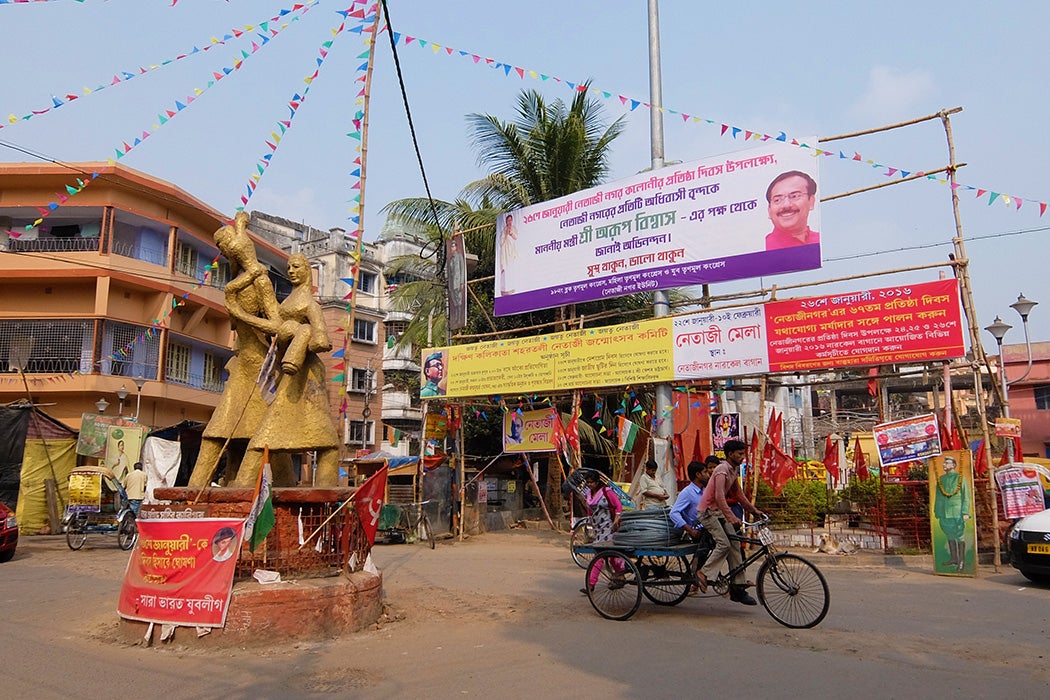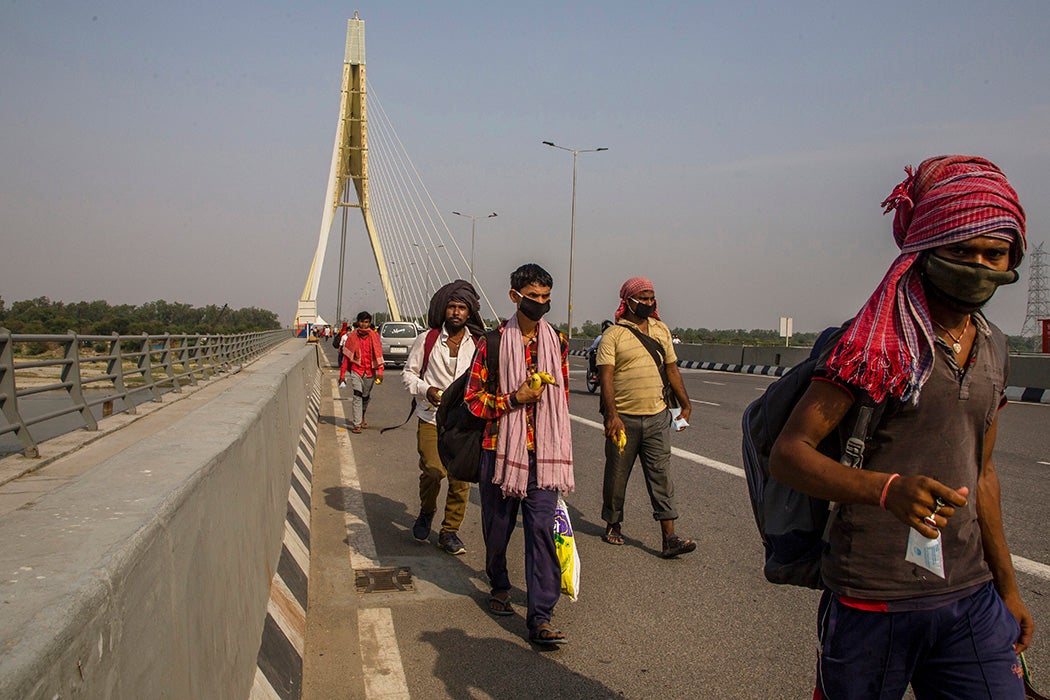In Netaji Nagar, a neighborhood in South Kolkata, stands a sculpture of three striding figures clutching possessions. One of them carries a child on a shoulder. Below the figures is a plaque bearing these words in Bangla, “Bastur tagide srishtir karigor, tomaderi srishti ajker ei nogor” (Compelled to create a home you became the creators of today’s city).
Netaji Nagar was one of the many refugee colonies that came up in Kolkata after India was partitioned in 1947. Based on religion, the so-called Radcliffe line divided the Indian subcontinent into Muslim-majority Pakistan and Hindu-majority India, creating two independent nations. India retained the central part of the subcontinent, its mass dividing Pakistan into two provinces, West and East, separated by some 1,000 miles. The former (Indian) State of Bengal was partitioned in the process as well. The eastern part became the province of East Pakistan (which then became the independent nation of Bangladesh in 1971); Bengal’s western region remained with India, forming the state of West Bengal, with Calcutta (now Kolkata) as its capital city.
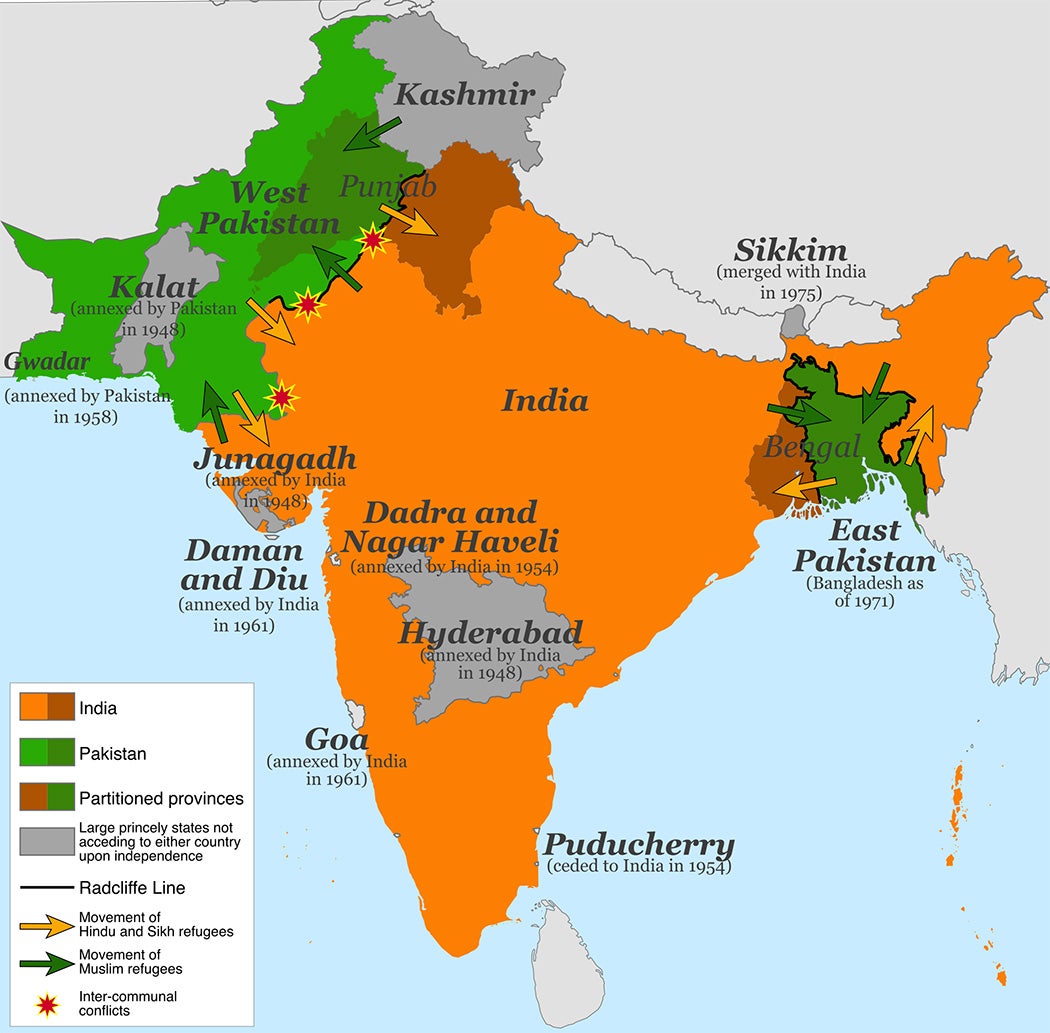
What followed the 1947 Partition(s) was one of the biggest migrations in history as entire communities, suddenly finding themselves a minority, fled across borders—Muslims in India left for both provinces of Pakistan and Hindus and Sikhs in Pakistan moved to India. Communal violence in the nascent countries forced many families to leave their homes and belongings overnight to face an uncertain future in a new nation. In India, the states of West Bengal, Assam, and Punjab witnessed people crossing the border in large numbers. In all, more than 15 million people were displaced due to the division.
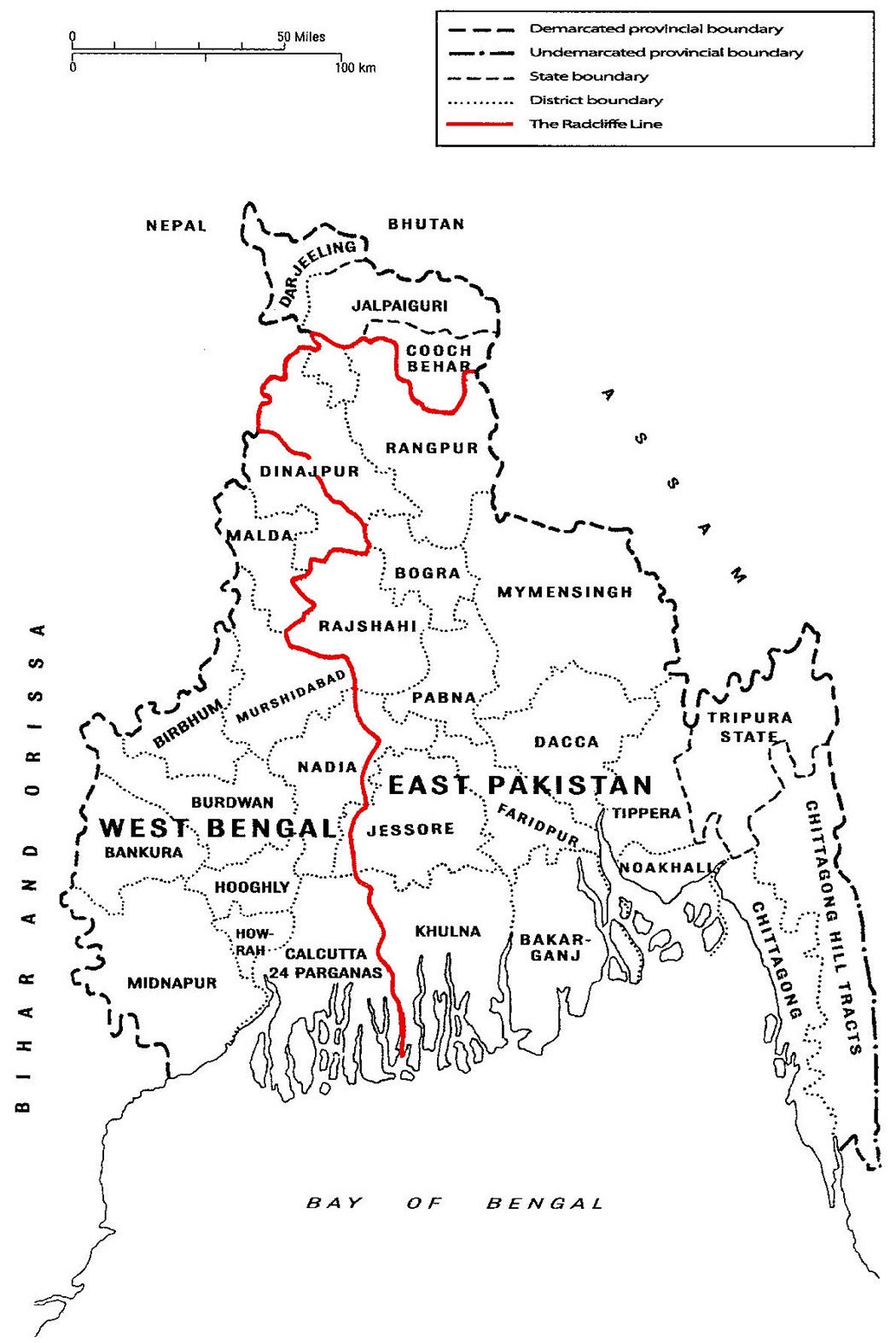
Stoked by its depiction in movies and books, interest in Partition has gradually grown. More recently, efforts by organizations such as the 1947 Partition Archive, Museum of Shadows of Partition, and Partition Museum | Amritsar have involved youth and first-generation migrants in documenting the event and its aftermath. Through their exploration of individual narratives and material culture, these organizations have shaped how we remember the past. In Kolkata, the capital city of West Bengal, certain segments of the complex history and layered trauma of the partition are overlooked while others are celebrated.
After 1947, Kolkata grew rapidly along its northern and southern fringes to accommodate the population rise caused by migration from East Pakistan. The second phase of struggle began for immigrants as they attempted to secure a place for themselves in the crowded city. Many refugees settled illegally, occupying fallow lands and empty buildings overnight and resisting police attempts to dislodge them. Scuffles broke out between squatters and thugs hired by local landlords to oust the former from their properties. The state government, which favored the landlord’s right to the land, overlooked these conflicts and claimed that West Bengal was already overcrowded, with no space to re-home refugees. In a letter to Prime Minister Jawaharlal Nehru, Bidhan Roy, the Chief Minister of West Bengal, rued that the money allocated for refugee rehabilitation in West Bengal was “‘insignificant’ compared to what has been spent for refugees from West Pakistan.” Hence, refugees took it upon themselves to find shelter in the city.
Weekly Newsletter
Get your fix of JSTOR Daily’s best stories in your inbox each Thursday.
Privacy Policy Contact Us
You may unsubscribe at any time by clicking on the provided link on any marketing message.
Within three years of partition, 150 squatter colonies had come up in and around Kolkata. In The Spoils of Partition, Joya Chatterji describes the swell, writing,
Refugees had literally filled up every empty space in and around the big towns, particularly in the great metropolis of Kolkata, occupying every tiny piece of vacant land they could find, whether on pavements or the ‘set-asides’ along the runways of airfields, in empty houses, on snake-infested marsh and scrubland, and even on the unsanitary verges of sewers and railway tracks. This consolidated metropolitan Kolkata, previously a cluster of discrete urban settlements, into a single, gigantic, and chaotic megalopolis.
Prafulla Chakrabarti posits that the lack of food and shelter drove refugees to conduct satyagraha (nonviolent resistance) at prominent locations in the city. Their hope was to get arrested so that they could receive two square meals a day in jail.
Memorializing Partition
Seventy-five years after Partition, the struggles of refugees after arriving in Kolkata remain absent from memorializing acts in popular culture. What is also forgotten is that many Muslim farmers and landowners were ousted from their homes in South Kolkata by refugees. Nehru was apprehensive that the economy of West Bengal would collapse if refugees continued to trickle in. On August 25, 1948, he wrote to Bidhan Roy, stating that “everything should be done to prevent Hindus in East Bengal from migrating to West Bengal. If that happened on a mass scale it would be a disaster of the first magnitude.”
Nehru was also concerned that mass migration would prompt Muslims to leave the country, undermining the new nation’s efforts at secularity. The Inter-Dominion Agreement, signed between India and Pakistan in 1948, set up minority boards and evacuee property management boards to reassure minority communities to stay back in their homes or return if they had already migrated. A provision in the Delhi Pact of 1950 denied Hindu East Bengali refugees the right to claim ownership of properties left by Muslim evacuees in West Bengal. Refugees could temporarily live on these sites until the owners returned. Many Muslim evacuees did return to West Bengal only to find their homes occupied by refugees.
Historian Romola Sanyal points out that lands on the southern fringes of Kolkata, where a large number of East Bengali refugees settled, belonged to Muslim landowners and poor peasants. From Sanyal’s interviews with immigrants, it emerges that there was a constant negotiation for space between refugees and Muslim landowners which in some cases resulted in Muslims being forced to leave their homes. One interviewee mentions that Muslims were “chased” out of their homes by refugees, and he had a friend who would loot Muslim homes. Sanyal notes that the history of forced occupation of land is not widely known because the illegal possession by refugees was legitimized by the anti-Muslim and anti-Pakistan feelings raging high at the time. The reluctance of Sanyal’s interviewees to speak on the topic also points out the unease in acknowledging a past mired in the twilight zone of legality-illegality and victim-perpetrator.
Memorialization of Partition has a specific character in Kolkata. There is a sense of loss prompted by the permanent estrangement from the desh, or homeland. At the same time, an underlying pride prevails in immigrants’ successes in consolidating their presence and shaping the city’s topography. The sculpture at Netaji Nagar echoes this sentiment. South Kolkata owes its rapid urbanization to the refugee population that settled there. Journalist and photographer Nazes Afroz’s 2018 photo exhibition, “Uncertain Landscape: Refugee Memories of Kolkata,” depicts the fast-paced urban development in that part of the city. The photographs, showing a then-and-now juxtaposition of streets and people, reveal how the economic conditions of refugees have improved as thatch-roofed homes have transformed into concrete multi-storied houses and shops have replaced empty lots and trees. Today, property rates in South Kolkata are the highest in the city. Areas like Jodhpur Park and Bijoygarh, which were vacant US Army barracks after World War II, are now studded with renowned educational institutions, boutiques, and shopping malls.
Sanyal’s interviewees speak of converting jungles and empty lands into habitable spaces. Notions of illegal occupation of land undermine the legitimacy of living in the city and serve as a reminder of a time when refugees were unwanted in a space that they eventually contributed toward immensely. Yet, the tumultuous years following Partition have organically lingered on in the city’s present. Names of places such as Azadgarh (Fort of Freedom), Bijoygarh (Fort of Victory), and Bikramgarh (Fort of Glory) in South Kolkata hearken back to the skirmishes of refugees against the police and local goons (garh means “fort” in Bangla and Hindi). Following Partition, parts of the city became metaphorical forts that refugees needed to protect and claim as their own. Refugee colonies such as Bagha Jatin Colony, Gandhi Colony, and Netaji Nagar, named after revered Indian freedom fighters Jatindranath Mukherjee, Mahatma Gandhi, and Netaji Subhas Chandra Bose respectively, emphasized refugee participation in the freedom struggle and a history of attachment to the country.
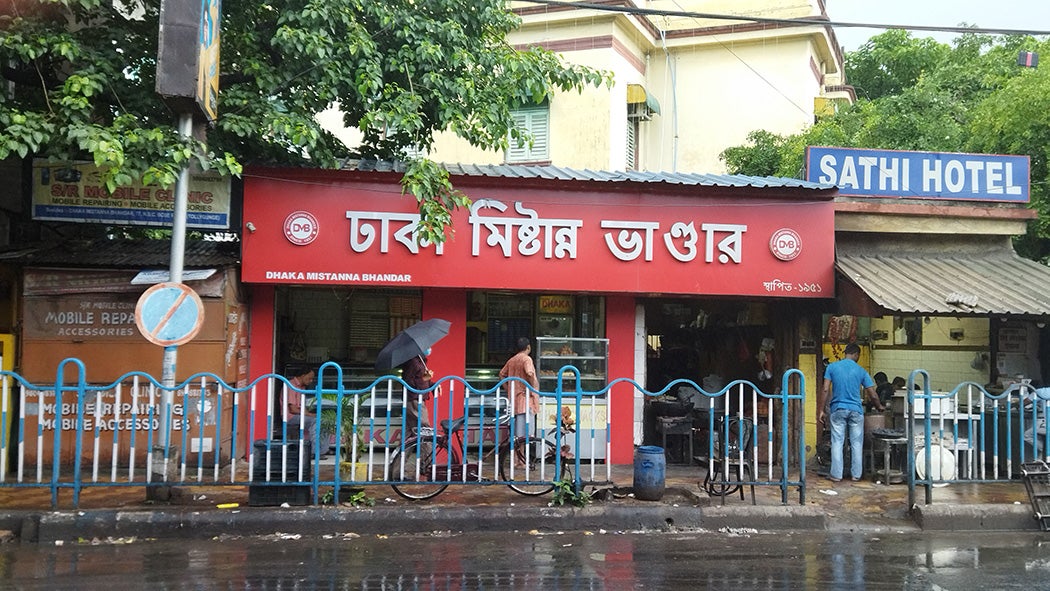
The urban landscape of Kolkata reflects refugee aspirations to memorialize fragments from a ruptured past in a new place. The numerous shops that bear names of places in Bangladesh, such as Comilla Optic House, Faridpur Stores, Khulna Stationary Mart, Dhaka Biriyani House, and Restaurant, East Bengal Sweets, reflect an attempt to commemorate the desh.
Food is a major element of East Bengali identity, expressing the nostalgia for the desh. East Bengali immigrants and indigenous residents of West Bengal, popularly called “Bangals” and “Ghotis” respectively, have distinct cooking styles that have been a topic of frequent discussions in parlors, books, and newspapers. Jovial rivalry over cooking skills has replaced the once fierce competition between the two communities over jobs. In The Hour of the Goddess, Chitrita Banerji aptly summarizes these tiffs, noting
The Ghoti trademark was the discernible sweet undertaste in the complex vegetable preparations that Bengal is famed for. To most Bangals, however, it was anathema. Ghotis, they said, were sissies, sweetening dishes that were meant to be hot, spicy, salty. If you want a sweet taste, why not eat dessert? In return, the Ghotis would sneer at the Bangals predilection for chillies and rich, oily sauces that deadened the palate and left no room for subtle tastes.
Food businesses in Kolkata have been quick to comprehend that nostalgia creates its own market. In 2019, 6 Ballygunge Place, a renowned restaurant in the city, hosted a Bangladeshi Fish Festival for three weeks. Most of the dishes on offer bore names of places in Bangladesh, such as Sylheti Shorshe Ilish (Sylhet Mustard Hilsa), Chattogrami Chingri (Chattogram Prawn), Mymonsinghi Magur (Mymensingh Catfish), and Pabnai Puti Bhaja (Pabna Fried Barb), reinforcing the distinct cooking styles of the land. Choturdoshpodi, a family-owned business opened during the COVID-19 pandemic, cooks and delivers fourteen types of bhortas, a spicy Bangladeshi dish made with mashed vegetables and meat, to customers’ homes.
A conscious remembrance of the desh is accompanied by a simultaneous process of suppressing harrowing memories of Partition. Oral narratives of East Bengali refugees expose the intense communal violence that tore apart the fabric of social relations as neighbors and friends turned against one another, and families watched family members get killed. In this context of collective suffering, the act of forgetting helps to deal with memories that are too painful to remember.
Manas Ray, a second-generation immigrant, reminisced about his neighborhood in Netaji Nagar that became an education or “shiksha factory” at night as voices of children loudly reading emanated from every other household. Refugees perceived knowledge and hard work as a gateway to eking out a respectable living and life in Kolkata. While palpable ties to the desh remain suspended in the past, the city still forms an integral part of the everyday life of immigrants. Memories of a time when refugees were unwanted outsiders in competition with locals over land, jobs, and other necessities have a greater continuity with the present and are, therefore, forgotten in favor of nostalgia for a utopic homeland frozen in time.
